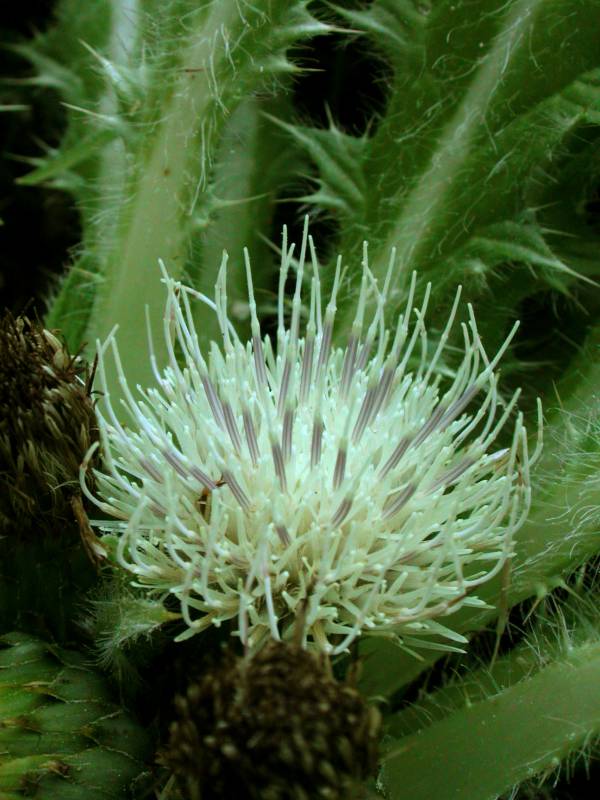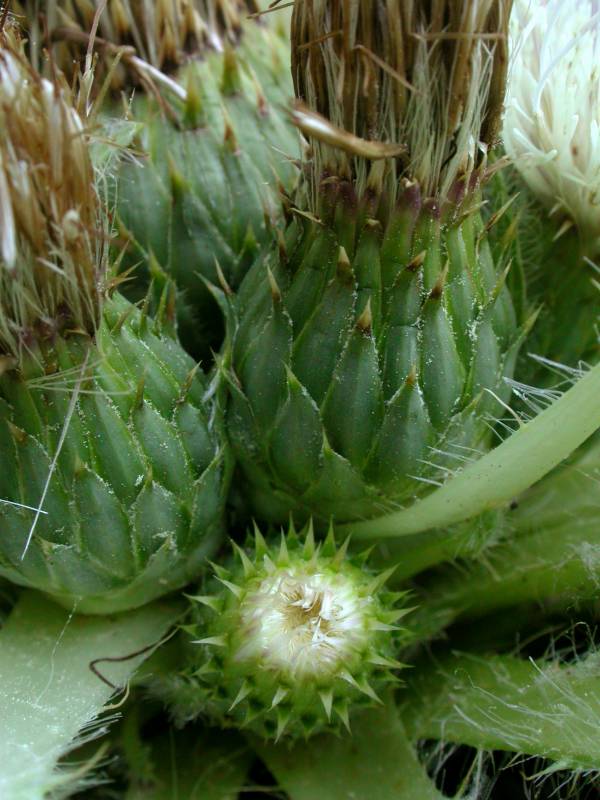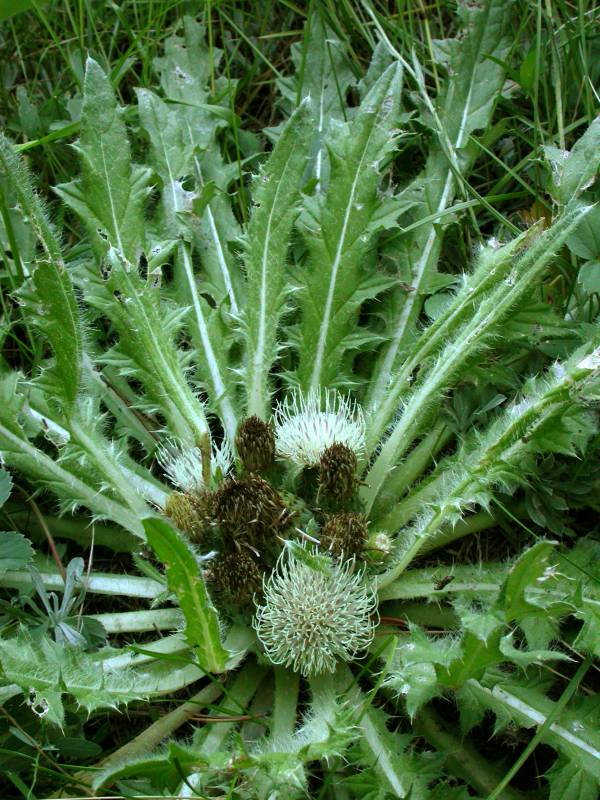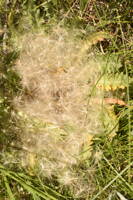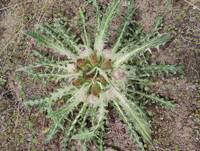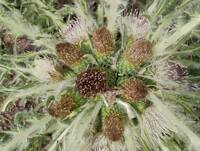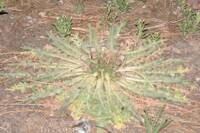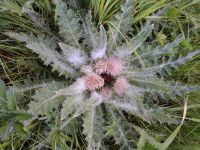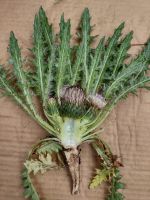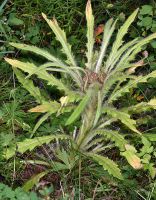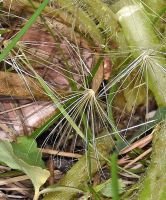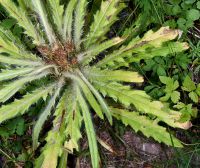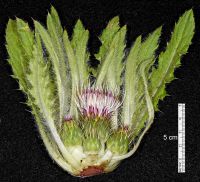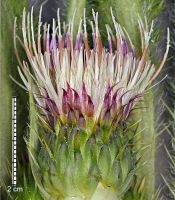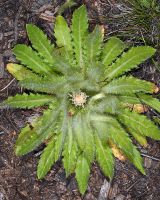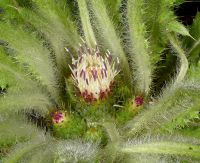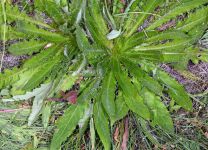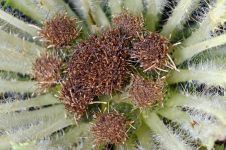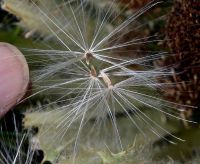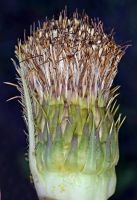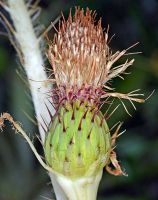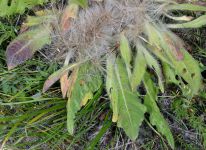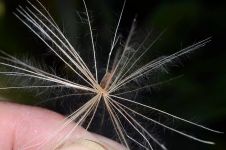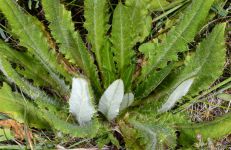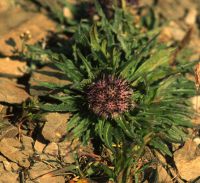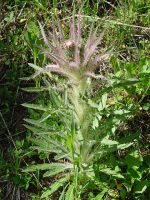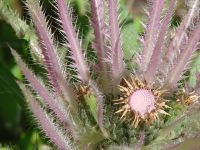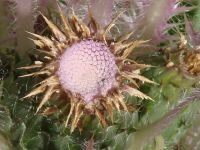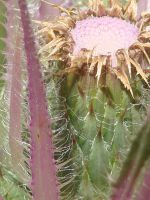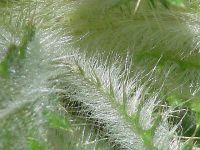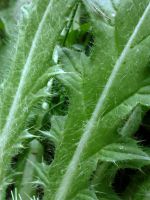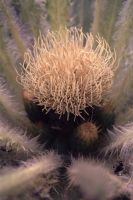Distribution: Occurring east of the Cascades crest in Washington; British Columbia to California, east to the Rocky Mountains.
Habitat: Wet meadows, moist, sometimes alkaline ground, and forest openings from the foothills to fairly high elevations in the mountains.
Flowers: June-August
Origin: Native
Growth Duration: Biennial, Perennial
Conservation Status: Not of concern
Pollination: Bumblebees, bees, butterflies, beetles, hummingbirds
Herbaceous perennial from a taproot, often acaulescent, or the stem up to 1 m. tall, thick and succulent, tapering slightly upward, somewhat spider-webby.
Leaves numerous in a basal rosette in the acaulescent form, alternate in the cauline form; leaves spider-webby on the upper surface, slightly woolly below, weakly spiny, coarsely toothed to pinnatifid, broadly linear.
Heads densely clustered at the top of the stem, over-topped by the subtending leaves; involucre 2-3.5 cm. high, nearly glabrous, its bracts broad, well imbricate, the outer with short, erect spine tip, the inner less spiny and often with a scarious, fringed tip; flowers all tubular and perfect, the corollas whitish to pale pink or purplish, unequally cleft, the deepest sinuses 5-8 mm. deep, the tube about twice as long as the throat.
Achene.
Publication: Trans. Amer. Philos. Soc., n. s. 7: 420. 1841.
Cirsium magnificum (A. Nelson) Petr. [HC]
Cirsium scariosum Nutt. var. americanum (A. Gray) D.J. Keil [FNA19]
Cirsium scariosum Nutt. var. citrinum (Petr.) D.J. Keil [FNA19]
Cirsium scariosum Nutt. var. coloradense (Rydb.) D.J. Keil [FNA19]
Cirsium scariosum Nutt. var. congdonii (R.J. Moore & Frankton) D.J. Keil [FNA19]
Cirsium scariosum Nutt. var. robustum D.J. Keil [FNA19]
Cirsium scariosum Nutt. var. scariosum [FNA19]
Cirsium scariosum Nutt. var. thorneae S.L. Welsh [FNA19]
Cirsium scariosum Nutt. var. toiyabense D.J. Keil [FNA19]
Cirsium tioganum (Congdon) Petr. var. tioganum
PNW Herbaria: Specimen records of Cirsium scariosum in the Consortium of Pacific Northwest Herbaria database
WA Flora Checklist: Cirsium scariosum checklist entry
OregonFlora: Cirsium scariosum information
E-Flora BC: Cirsium scariosum atlas page
CalPhotos: Cirsium scariosum photos

